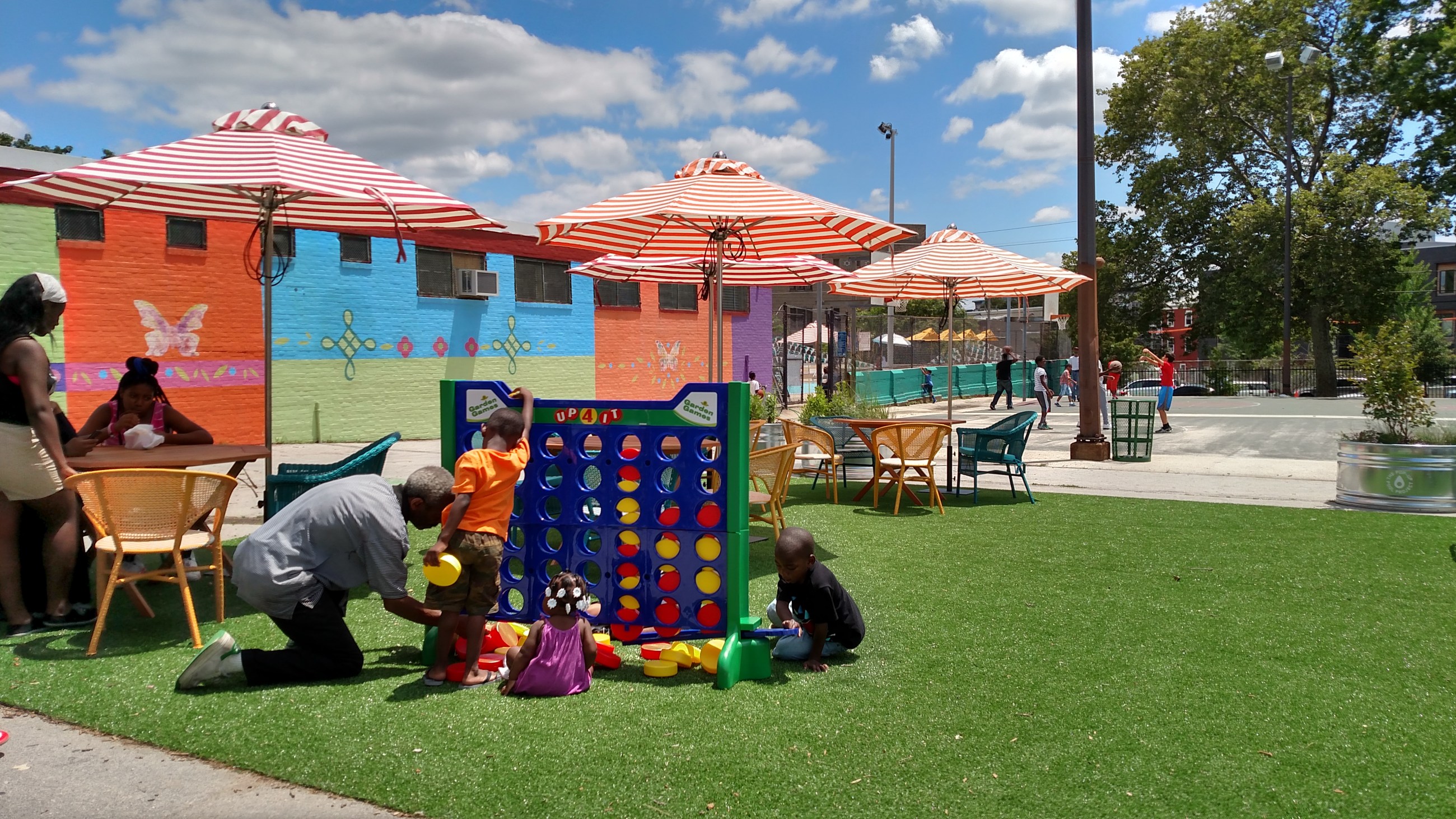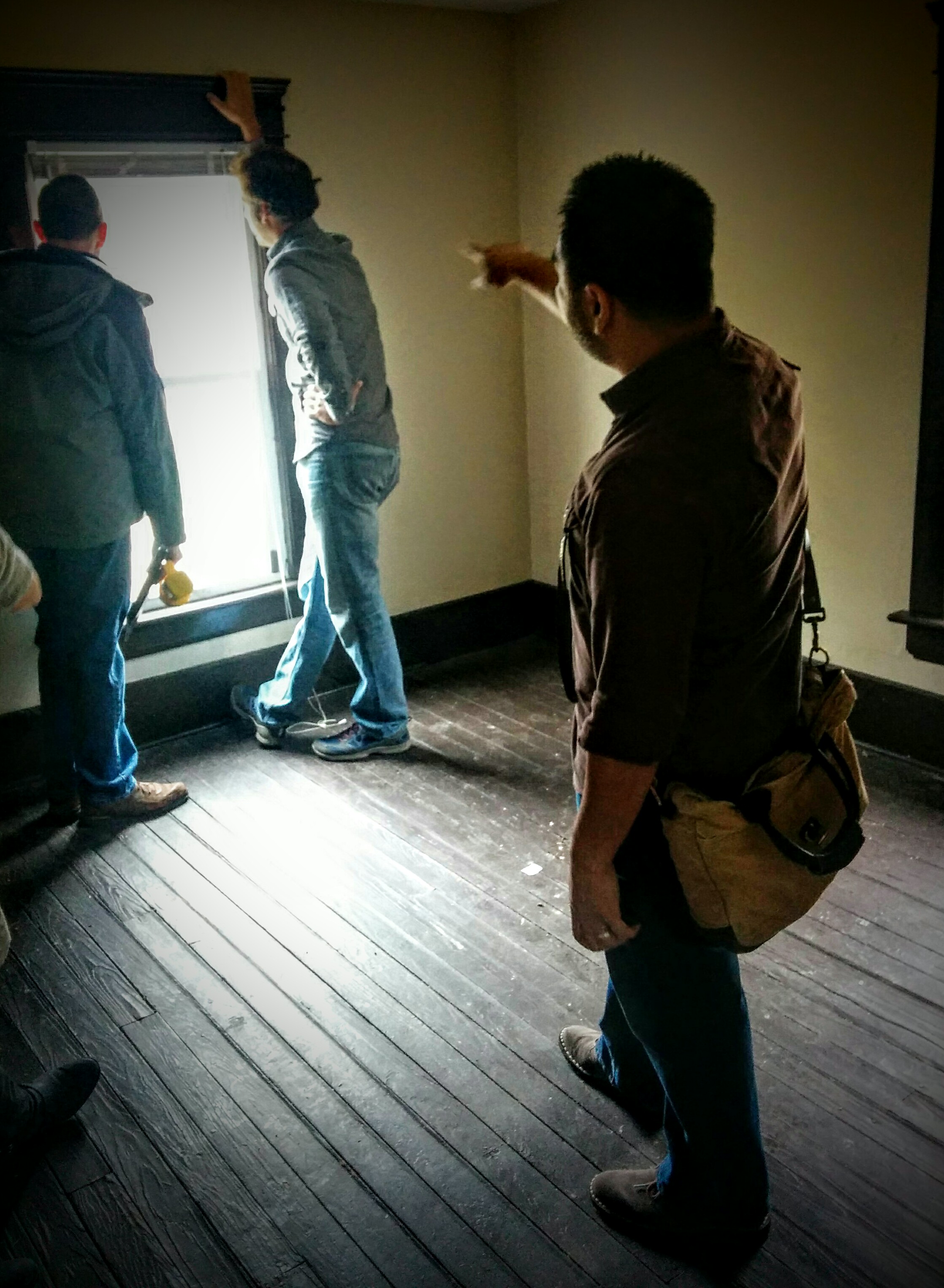
Protecting the importance of place in creative placemaking
The Pop Up Pool project, a Knight Cities Challenge winner.
I heard the words creative placemaking for the first time when I began my summer internship at Knight Foundation. I was immediately interested. The concept suggests that developers can use art, creativity and culture to increase the quality of life in their towns and neighborhoods. By doing so, placemakers inspire social and economic growth within the communities where they work.
In this way, creative placemaking has the potential to transform the way we relate to each other in public spaces. It changes the way people connect to fellow community members. It alters the physical environment of the neighborhood itself. However, these changes aren’t always positive.
The dynamics of human connection are delicate at best, so physical changes that also affect a community’s culture cannot be taken lightly. Such changes have the power to uplift neighborhoods and create a more inclusive community. But their power can also disfranchise poor residents and uproot cultural traditions, directly and indirectly.
Creative placemaking seeks to create community, but, we can not ignore that community is crafted. It is carved from the same material as history and molded by collaboration. Placemakers use their creativity to channel these influences to enhance communities they serve.
Places are made from narratives, not blank slates. That’s why it’s essential to acknowledge the heritage unique to any location and to work in partnership with the community. Placemakers can work with residents to ensure that culture, the medium that grounds communities in their identity, transforms the way they interact with their neighborhoods.
Many successful projects supported by Knight Foundation do this. In Philadelphia The Pop Up Pool Project, a winner of the 2015 Knight Cities Challenge, used upgraded design to attract more people to a local public pool located in Francisville. Most important, the project sought to improve the pool for members of the community, while also attracting new users, coordinating with community organizations to include local artists and small business owners in the installation. It did not give birth to a new place, but rather, it enhanced an existing location in a way that encouraged new forms of interaction. Now, after its success in the summer of 2015, the project has been adopted by the city as Swim Philly and includes five locations.

In Akron, Ohio, another Knight-funded initiative, The Exchange House, is using collaboration to improve community life for immigrants living in the North Hill neighborhood. Project leaders are working with the high population of Bhutanese refugees to convert the vacant house into a cultural hostel and gathering space. Sai Sinbondit, the project designer, is very motivated to give refugees a new place to store their history. Before moving to Ohio he spent time in Thailand’s refugee camps and, according to the Akron Beacon Journal, the refugee’s faces remind him of his parents. The benefits of The Exchange House will not be limited to the immigrant community. Project leaders hope that the house will also help non-immigrants increase their cultural awareness.
Places are not only geographic locations. They are diverse communities whose unique existence depends on both history and culture. The people that live in these neighborhoods know this better than anyone. It is up to placemakers to hear what they have to say. As powerful agents of social change, they can change the way people relate to each other and their communities. That is a great power. With it comes the responsibility to foster inclusivity and preserve the culture native to place.
Darien Carr is a community and national initiatives intern at Knight Foundation. Contact him via [email protected] or follow him on Twitter via @unknown_dc.
Recent Content
-
Communitiesarticle ·
-
Communitiesarticle ·
-
Communitiesarticle ·


